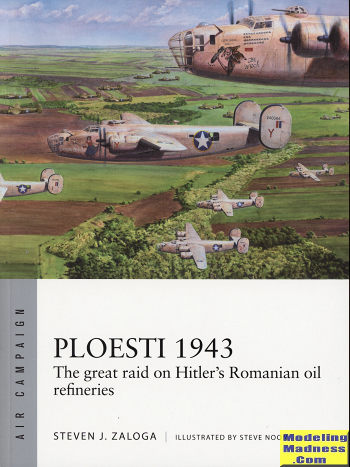 By the time
the US got really involved in the war in Europe/North Africa, the tide had
already started to turn for the Third Reich. The USAAF thought that strategic
bombing (bombing of specific targets) was a better way to do things that carpet
bombing (bombing of cities). So US bomber groups were tasked with taking out the
means of production rather than the people who operated the various plants and
factories.
By the time
the US got really involved in the war in Europe/North Africa, the tide had
already started to turn for the Third Reich. The USAAF thought that strategic
bombing (bombing of specific targets) was a better way to do things that carpet
bombing (bombing of cities). So US bomber groups were tasked with taking out the
means of production rather than the people who operated the various plants and
factories.
It was pretty obvious from the start that the best way to
bomb something was when there was no opposition. It was nigh impossible to wipe
out anti-aircraft guns enough to make a difference but it was possible to reduce
the threat of fighters. There were two basic ways of dealing with this. One was
to hit those production resources that provided parts for and the assembly
plants for aircraft. The other was the cut off the supply of fuel. This latter
one had the benefit of reducing the number of operational tanks, ships, trucks
and other vehicles that needed it.
The main issue with dealing with the fuel supply is that in
1943, most of the refineries were not exactly close. The major oil production
facilities for the Germans were in Romania. This was too far for British based
bombers, but not for those operating out of eastern Libya. The B-24 Liberator
had the best range/bomb load combination so it was decided to send several bomb
groups to North Africa to participate in what was hoped would be a single knock
out blow of the refineries around Ploesti, Romania.
Much planning and practice went on by all concerned and there
was quite a bit of dissent amongst the bomb group commanders as to how this
should actually be carried out. It was decided that low level was the best way
as it would help to avoid being detected by German radar on the way in. It was
hoped that this would be a huge surprise that that defenses would be caught off
guard. The flight plan was complex to avoid detection.
I won't go into all the details, as they are extensive, but
the Germans were aware of what was going on almost at the beginning of the
mission. IP's were missed and some units were decimated by the low level flying
and light flak. Much positive spin was made of the mission, but it was pretty
much a disaster. Commanders were sacked and many medals were issued.
The author did a superb amount of research in putting this
book together. We are provided with the full mission story of every group that
partook of the mission as well as individual stories of individual aircraft. The
other side's story is also told, making for a well rounded look at what is
considered by many to be one of the iconic raids of WWII in Europe. Lots of
great period photos (some in color), along with excellent art work and easy to
understand charts and diagrams make this a book that all WWII air enthusiasts
need to have on their shelves.
September 2019
For more on the complete line of Osprey books and to order
this one, visit
www.ospreypublishing.com
.
If you would like your product reviewed fairly and quickly, please contact
the editor or see other details in the Note to
Contributors.
 By the time
the US got really involved in the war in Europe/North Africa, the tide had
already started to turn for the Third Reich. The USAAF thought that strategic
bombing (bombing of specific targets) was a better way to do things that carpet
bombing (bombing of cities). So US bomber groups were tasked with taking out the
means of production rather than the people who operated the various plants and
factories.
By the time
the US got really involved in the war in Europe/North Africa, the tide had
already started to turn for the Third Reich. The USAAF thought that strategic
bombing (bombing of specific targets) was a better way to do things that carpet
bombing (bombing of cities). So US bomber groups were tasked with taking out the
means of production rather than the people who operated the various plants and
factories.